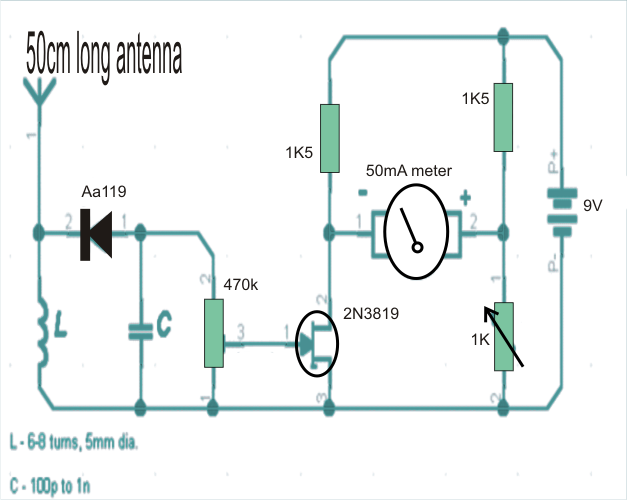For a radio receiver, it is often a pain to evaluate the strength of the field on which the performance of the radio is dependent.
The circuit used for this purpose is a cost effective yet useful tool to achieve performance evaluation of the radio field strength.
The extreme left of the circuit is the crystal receiver or crystal radio part of the circuit. A suitable germanium diode like the IN34 or AA119 is recommended.
A silicon diode does not achieve the performance of a germanium diode for its functions as a varactor because of its depletion layer characteristic.
The inductance can be built by 6 to 8 turns of enameled wire having a diameter of 1milimeter and a coil diameter of millimeter.
The capacitor selected is around 100picoFarrad that resonate with inductance. By adjusting the spacing of the turns, the frequency can be varied.
The second stage of the circuit employs a high impedance amplifier in the style of a JFET 2N3819 that is gated by a variable 470K resistance.
This is basically a potentiometer. By adjusting this, the sensitivity of the circuit is adjusted. This trimmer is used for achieving 0 deflection in the meter.
It is recommended to use meters of 50miliAmpere or lesser capacity.
While calibrating with different antennae, this meter is very useful. However, great performance from such a simple circuit with a cheap meter is not expected.












No comments:
Post a Comment